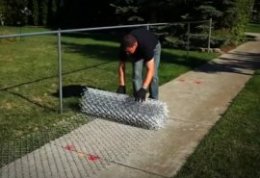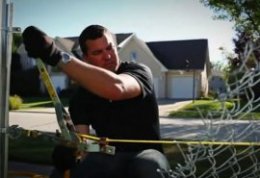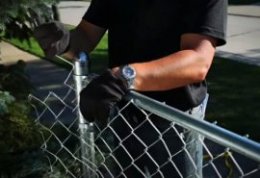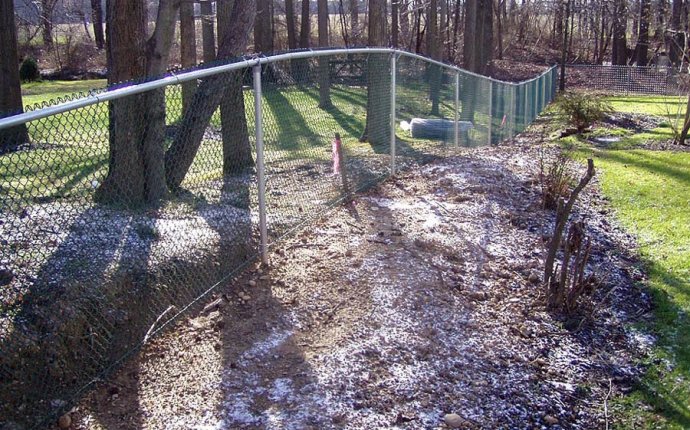
Install chain link fence
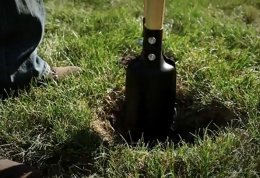
Assembling the Posts and Rails
• Dig postholes three times wider than the post diameter: 6 to 8 inches for end and corner posts, 4 to 6 inches for line posts and 1/3 of the length of the pole plus 4 inches for gravel.
• Fill all the holes with 4 inches of gravel and tamp.
• Add 6 inches of concrete to the corner, gate and end postholes only.
• Put posts in the wet concrete and plumb them with a level.
• Finish filling in the corner, gate and end postholes with concrete.
• Check the posts for plumb after every few shovelfuls and adjust as needed.
• Slope the top of the concrete so water drains away from the posts.
• Let the concrete cure for two to three days. Do not fill the holes for the line posts with concrete, and don’t put the line posts in place.
• Slide tension bands onto each corner, gate and end post. The bands will help hold the mesh in place once it’s installed. You will use 3 for a 4-foot fence, 4 for a 5-foot fence, and 5 for a 6-foot fence.
• Put hinges and latch hardware onto the gateposts at roughly their final positions, to install later.
• Use a rubber mallet to drive end post caps onto the gate, corner and end posts, and slip a brace band over each installed post.
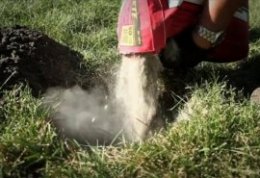 • Install looped caps, end post caps and rail caps.
• Install looped caps, end post caps and rail caps.
• Drive looped caps onto the line posts with the mallet and put the posts in their holes, but don’t fill the holes.
• Bolt a rail cap to each brace band, tightening just enough to hold the cap in place. Feed the rails through the looped caps.
• Cut rails with a pipe cutter or hacksaw, if needed. If you need longer rails, join them together using rails with a slightly smaller wedged end that fits into a full-size rail.
• Fit the rails into the rail caps and raise or lower each cap to the final height of the mesh, including 2 inches clearance at the bottom.
• Tighten the brace bands, fill the holes around the line posts with dirt and tamp until firm.
Installing the Chain Link
• Lay the chain link mesh on the ground outside the fence.
• Run a tension bar through the links at the end of the mesh.
• The bar makes the end of the fence rigid and provides something to attach to the posts.
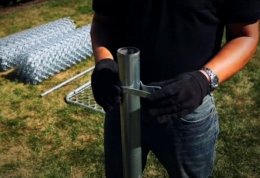 • With a helper, stand the mesh up and use a socket wrench to bolt the tension bar into the tension bands on one of the end posts.
• With a helper, stand the mesh up and use a socket wrench to bolt the tension bar into the tension bands on one of the end posts.
• Align the mesh so it overlaps the rail by 1 to 2 inches and sits about 2 inches above the ground.
• Chain link mesh must be pulled taut or it will sag. Stretching is done with a tool called a fence puller (A). Note location of the tension bar (B).
• Insert a pull bar through the unattached mesh a few feet from the final post (C).
• Attach the yoke to the pull bar.
• Crank the fence puller until the loops of the mesh move no more than ¼ inch when you squeeze them together.
• If the mesh changed height or became distorted during tightening, pull on it to reshape it.
• Without releasing the fence puller, insert a tension bar in the mesh close enough so it can be fastened to the tension bands on the end post nearest the fence puller.
• To remove the excess mesh between the tension bars and end post, open a loop at the top and bottom, then twist and pull the strand free.
• Pull the tension bar into the tension bands on the end post by hand, and then tighten the bolts on the bands with a socket wrench.
• Release the fence puller and remove the pull bar to which it was attached.
• Repeat the entire hanging and stretching process along the remaining sides of the fence.
• Bend one end of an aluminum tie wire into a hook and grab the bottom strand of the opening above the rail.
• Loop the tie wire around the top rail, pull it firmly and tie it back onto the mesh.
• Space the tie wires every 12 to 16 inches along the rail and then attach them to the line posts.
• Thread a tension wire through the bottom loops of the mesh and tighten it around the end posts.
• Wrap the wire around itself several times to fasten it.
• An alternative to threading the wire is to attach it to the mesh every 2 feet or so with hog rings.

